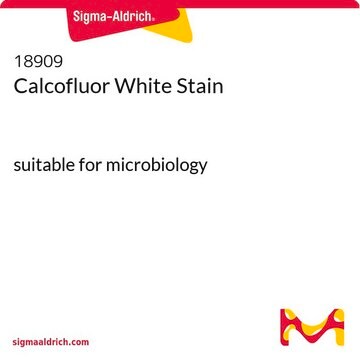E2129
Evans Blue
Dye content ≥75 %, Powder
Synonim(y):
Direct Blue 53
About This Item
Polecane produkty
product name
Evans Blue, Dye content ≥75 %
Postać
powder
Poziom jakości
skład
Dye content, ≥75%
Zastosowanie
diagnostic assay manufacturing
hematology
histology
temp. przechowywania
room temp
ciąg SMILES
[Na+].[Na+].[Na+].[Na+].Cc1cc(ccc1\N=N\c2ccc3c(cc(c(N)c3c2O)S([O-])(=O)=O)S([O-])(=O)=O)-c4ccc(\N=N\c5ccc6c(cc(c(N)c6c5O)S([O-])(=O)=O)S([O-])(=O)=O)c(C)c4
InChI
1S/C34H28N6O14S4.4Na/c1-15-11-17(3-7-21(15)37-39-23-9-5-19-25(55(43,44)45)13-27(57(49,50)51)31(35)29(19)33(23)41)18-4-8-22(16(2)12-18)38-40-24-10-6-20-26(56(46,47)48)14-28(58(52,53)54)32(36)30(20)34(24)42;;;;/h3-14,41-42H,35-36H2,1-2H3,(H,43,44,45)(H,46,47,48)(H,49,50,51)(H,52,53,54);;;;/q;4*+1/p-4/b39-37+,40-38+;;;;
Klucz InChI
ATNOAWAQFYGAOY-GPTZEZBUSA-J
informacje o genach
human ... PTPN1(5770) , PTPRF(5792)
Szukasz podobnych produktów? Odwiedź Przewodnik dotyczący porównywania produktów
Powiązane kategorie
Opis ogólny
Zastosowanie
Działania biochem./fizjol.
Hasło ostrzegawcze
Danger
Zwroty wskazujące rodzaj zagrożenia
Zwroty wskazujące środki ostrożności
Klasyfikacja zagrożeń
Carc. 1B
Kod klasy składowania
6.1C - Combustible acute toxic Cat.3 / toxic compounds or compounds which causing chronic effects
Klasa zagrożenia wodnego (WGK)
WGK 3
Temperatura zapłonu (°F)
Not applicable
Temperatura zapłonu (°C)
Not applicable
Certyfikaty analizy (CoA)
Poszukaj Certyfikaty analizy (CoA), wpisując numer partii/serii produktów. Numery serii i partii można znaleźć na etykiecie produktu po słowach „seria” lub „partia”.
Masz już ten produkt?
Dokumenty związane z niedawno zakupionymi produktami zostały zamieszczone w Bibliotece dokumentów.
Nasz zespół naukowców ma doświadczenie we wszystkich obszarach badań, w tym w naukach przyrodniczych, materiałoznawstwie, syntezie chemicznej, chromatografii, analityce i wielu innych dziedzinach.
Skontaktuj się z zespołem ds. pomocy technicznej









